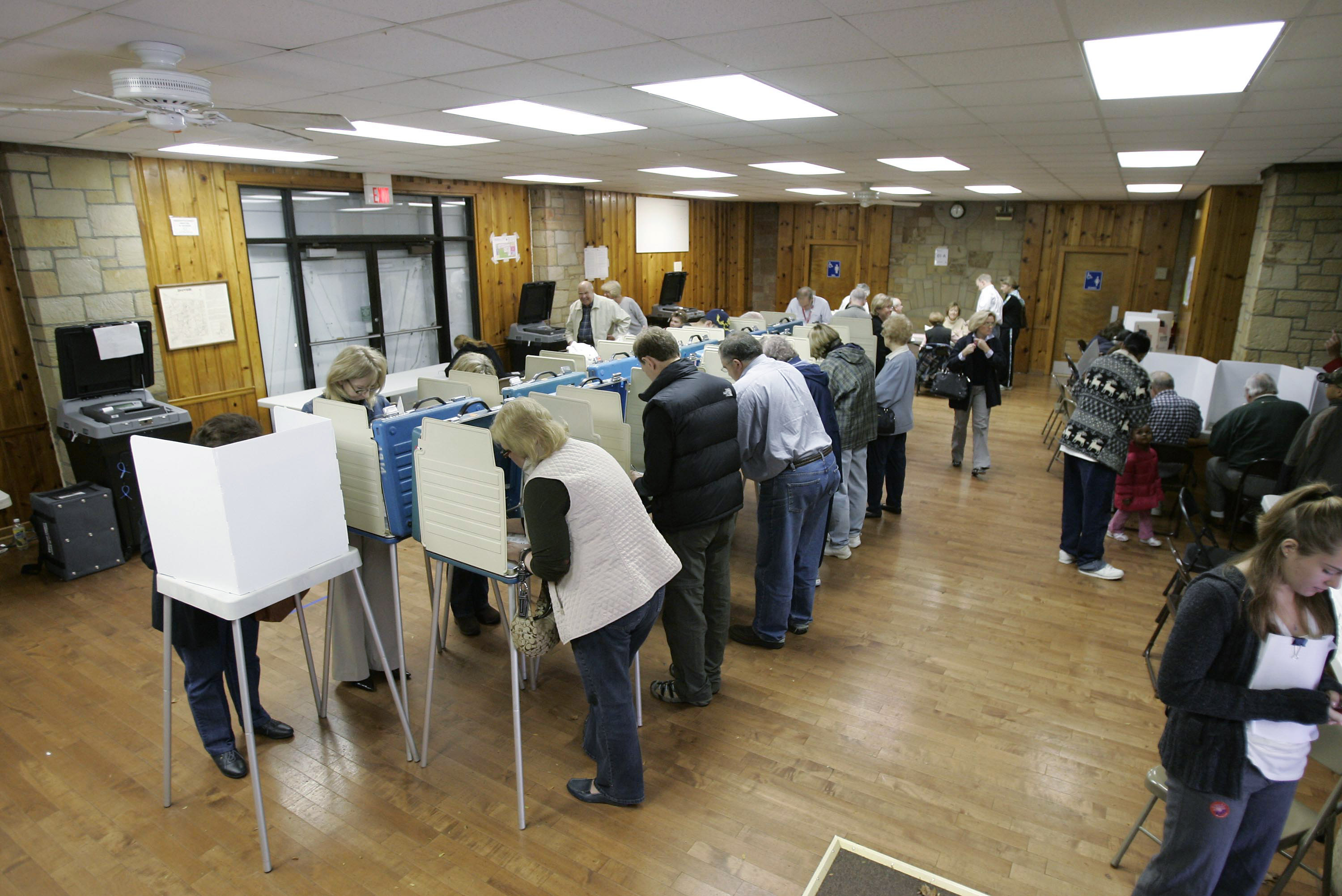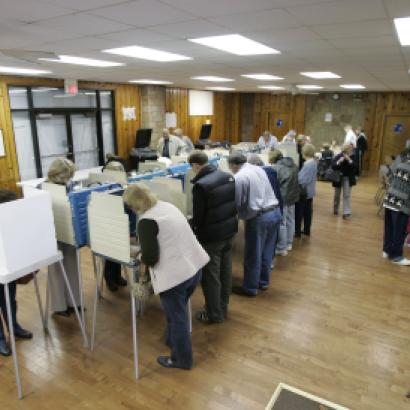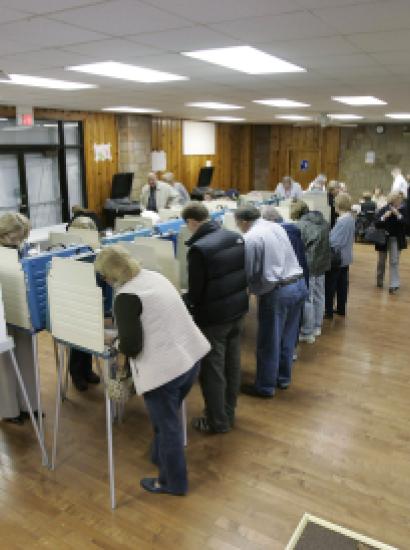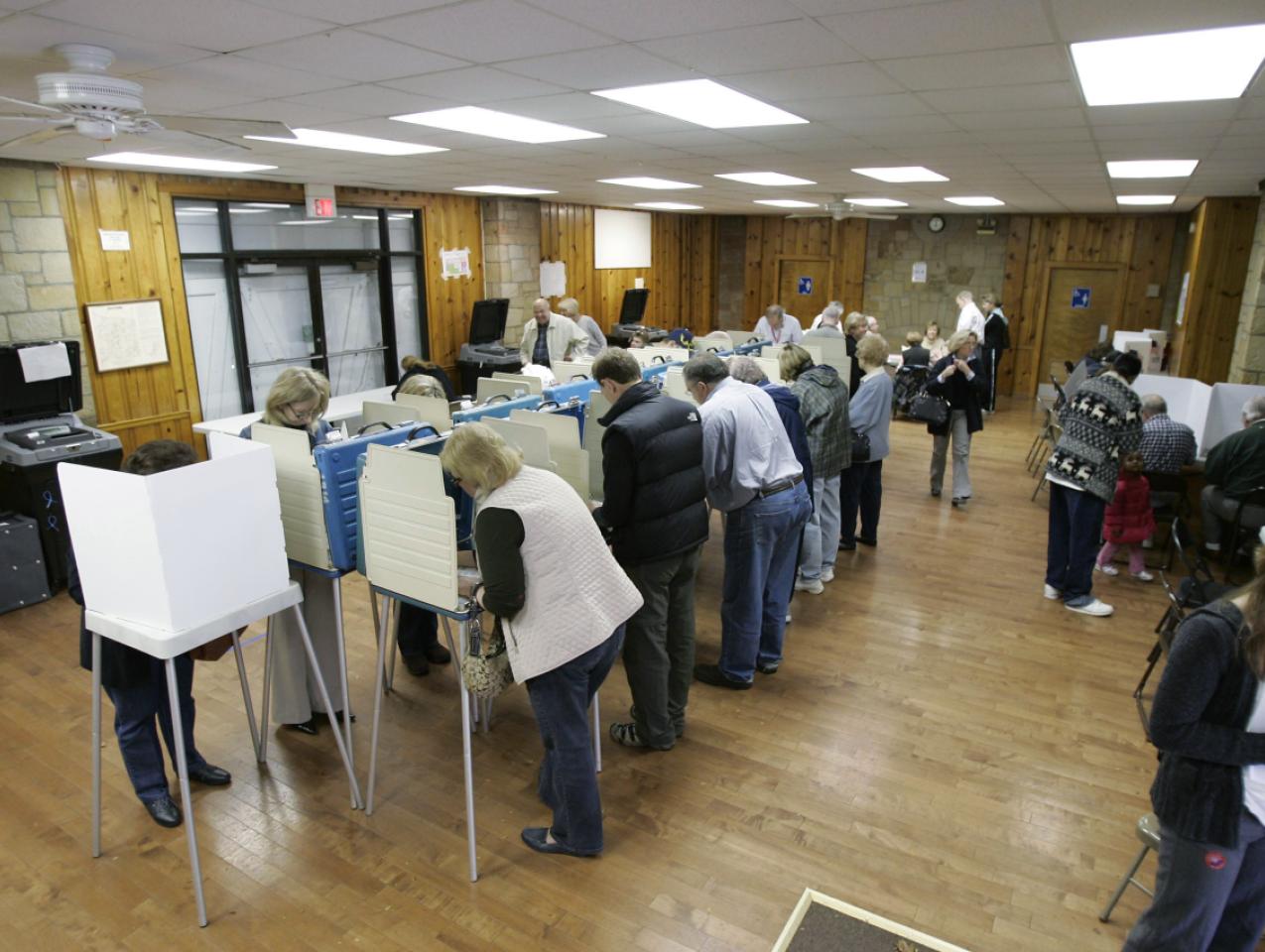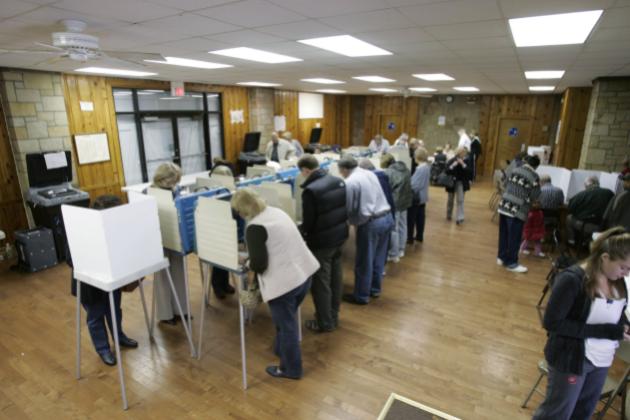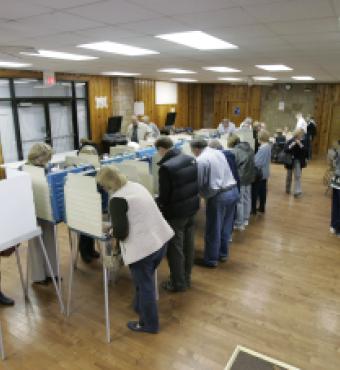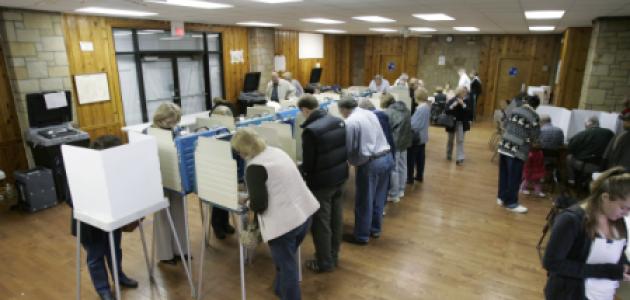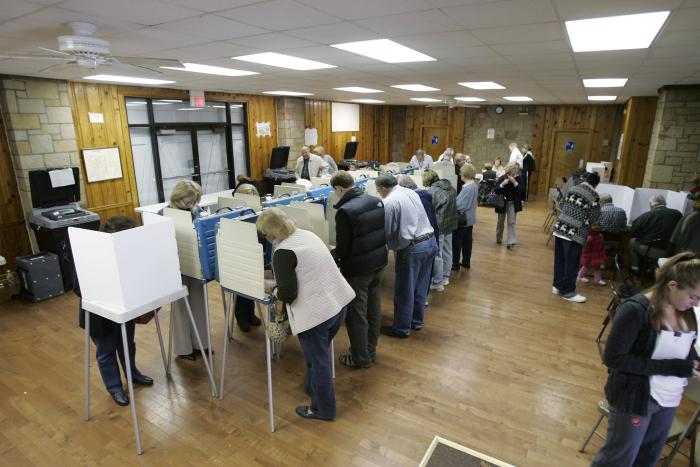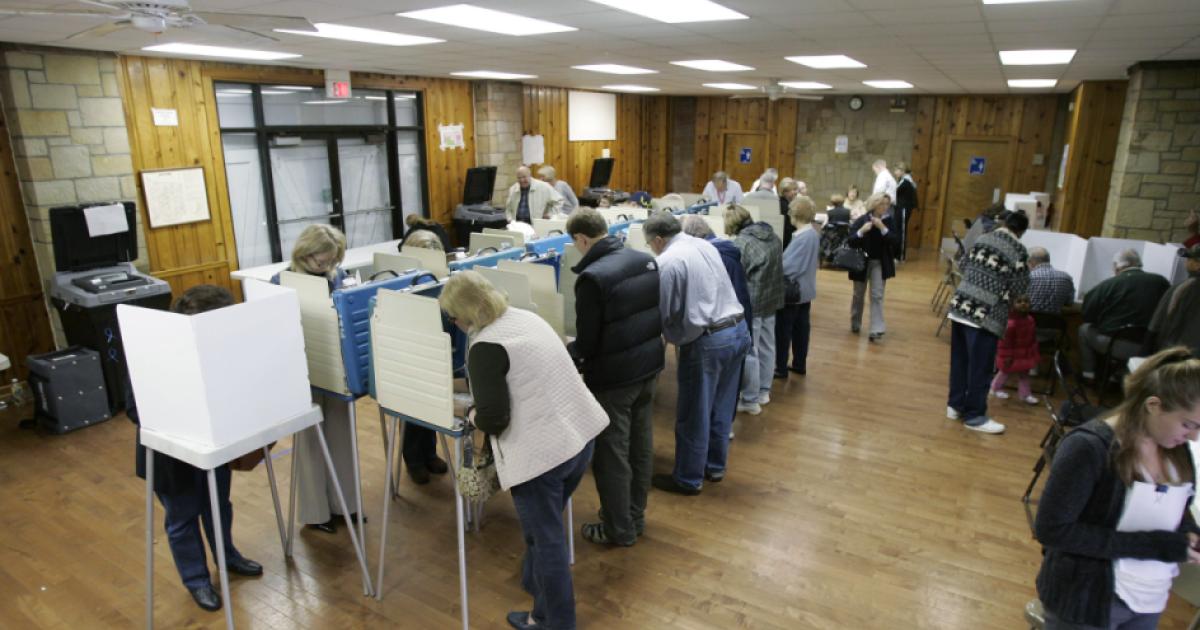- Politics, Institutions, and Public Opinion
- Campaigns & Elections
- State & Local
- California
After a drubbing of the first order in the 2018 midterm election—congressional Democratic candidates winning all seven House races in Orange County, a one-time conservative bastion that’s synonymous with Richard Nixon, Ronald Reagan, and John Wayne—California Republicans cried foul.
Take this op-ed, for example, in which Shawn Steel, a former GOP state party chair, claims that Democrats in America’s most populous state have rigged the system so as to make California a deeper shade of blue.
Among Steel’s examples of ways the left tries to ensure a friendlier turnout: inmate and felon voting ( a proposed ballot initiative would grant voting rights to paroled felons), pre-registration of 16- and 17-year-olds, absentee ballots automatically mailed to every voter, plus a practice known as “ballot harvesting” that allows any intermediary to return an absentee ballot (among the problems with this: seniors could be duped into handing over incomplete ballots to a political operative who could then alter their vote, if not pocket it altogether).
Steel also referenced California’s “motor voter” law, which automatically registers individuals to vote when they visit the Department of Motor Vehicles (unless they choose to opt out). The concern when this began: could California’s DMV, so inept in its efficiency and technology that Governor Gavin Newsom saw the need to revamp the much-maligned bureaucracy, somehow make a hash of the state’s voter rolls?
The answer, it would seem: yes.
The funny thing about the aftermath of the last election in California: the media did their best to debunk the notion that “ballot harvesting” unfairly swung elections the Democrats’ way, without paying much attention to the potential impact of the “motor voter” program (which, according to post-election data, might have cost Republicans one of the seven Orange County seats).
Indeed, “motor voter” registration remains a legitimate concern as California prepares for next year’s statewide vote—or so one gleans from a state government audit released last week that shows the DMV can’t say with certainty who’s participating in California’s elections and whether would-be voter information is being processed correctly.
Per the audit, DMV offices produced almost 84,000 duplicate records (out of three million reviewed) and more than 171,000 with partisan mistakes (the wrong party affiliation). That’s just for the first five months of the program, which began in the spring of 2018. It doesn’t include the summer and fall of 2018, when get-out-the-vote efforts intensified in California as the November election drew nearer.
But one matter the audit did not explore (and a Democratic-controlled state legislature likely won’t touch): whether everyone who participates in California’s democratic process is doing so legally.
Last fall, it was reported that approximately 1,500 non-citizens had been mistakenly registered to vote. One such example: a Newport Beach resident, who had a green card and was married to a US citizen, attempted to get a replacement driver’s license but ended up with a registered voter notice. According to DMV officials, a department worker mistakenly changed the non-citizen’s citizenship status so as to make him eligible to vote. Although the DMV claims it corrected the information, state records still had the non-citizen listed as an unaffiliated voter weeks after the November 2018 election.
A few months after the Democrats’ historic gains in California, state officials said something unusually candid: they couldn’t state with certainty whether non-citizens were voting. The culprit, they alleged, was a government voter-eligibility questionnaire that was created in a way to prevent the state from asking directly about legal status.
The problem: the questionnaire aggregates five separate characteristics (including age and citizenship status) into one yes-or-no prompt as to whether an applicant is eligible to vote. If an applicant either doesn’t understand the terms of the question, or chooses not to answer it honestly, that raises a concern as to whether the state has a filter with which to make sure non-citizens don’t receive a ballot.
This hasn’t gone unnoticed by legislative Republicans in Sacramento. Last December, State Senate Minority Leader Patricia Bates introduced a measure that would allow individuals to opt in for voter registration instead of automatically being registered to vote or having to drop out of the program.
The odds of that opt-in bill seeing the light of day in a Democratic-controlled legislation?
About the same as a measure for opting in or out of Social Security seeing the light of day in the Democratic-controlled US House of Representatives.
Were California anything close to a presidential swing state, this matter might draw more media scrutiny—especially with President Trump periodically referencing California voter fraud (for example, an April 2018 roundtable event in West Virginia during which he alleged: “In many places, like California, the same person votes many times—you’ve probably heard about that. They always like to say ‘oh, that’s a conspiracy theory”—not a conspiracy theory, folks. Millions and millions of people.”).
But that doesn’t mean that California is irrelevant as far as Washington’s balance of power is concerned.
The Cook Political Report, which handicaps congressional races nationwide, presently rates only 22 of the nation’s 435 House districts as “toss-ups.” Not a one is in California.
But move a rung lower to the next level of competitiveness—so-called “lean” congressional districts—and it’s a different story.
Five of the 18 Democratic-controlled “lean” districts are in the Golden State. Three of them touch Orange County—California’s 39th, 45th and 48th districts. The other two California Democratic districts: the 10th (the Central Valley’s Stanislaus and San Joaquin Counties) and 21st (multiple counties further to the south in the Central Valley). Add one California congressional district rated “lean Republican” (the 50th, located primarily in San Diego County), and that’s at least six of California’s House seats that will be aggressively contested a year from now.
Why does this matter in the scheme of congressional politics? Because nearly all of the aforementioned districts were close in 2018, from as few as less than 900 votes in the 21st Congressional District (a margin of 0.8%) to 20,938 votes in the 48th Congressional District (a margin of 7.2%). In the other three districts, flipping as many as 6,300 votes in each race would have handed the contest to the Republican candidate.
California therefore has an appeal to National Republican Congressional Committee, which strategizes House races nationwide, in that these districts, with their freshman Democratic members and close outcomes in 2018, constitute low-hanging fruit (that’s if President Trump is a stronger presence in 2020 than he was in 2016, which we discussed in this space a week ago).
But California could be further relevant given the GOP’s track record in past congressional elections.
Trump’s seeking a second four-year term puts the 2020 election in the same category as 2004, 1992, 1984, 1972, and 1956—all years in which a Republican president sought a re-election victory.
Looking at those years in which the GOP incumbent prevailed (that rules out 1992), here’s what the numbers show: a loss of two House Republican seats and Eisenhower’s landslide win in 1956; a gain of 12 House seats amid 1972’s Nixon landslide; 16 House seats gained during the Reagan landslide of 1984; three new House Republican seats coinciding with Bush 43’s much narrower win in 2004.
What this tells us: there’s no recent precedent for Republicans gaining 20-plus seats in the House when an incumbent Republican president is at the top of the ticket. As Republicans have to win that many to take back the House (upending a current balance of 235 Democrats, 197 Republicans, plus two vacancies and one independent), the GOP will have to look beyond the 17 “toss-up” Democratic districts if the goal is to change Nancy Pelosi’s leadership title.
The California lesson in 2018: every vote counts.
The California fear in 2020: every vote will count—legal or not.







